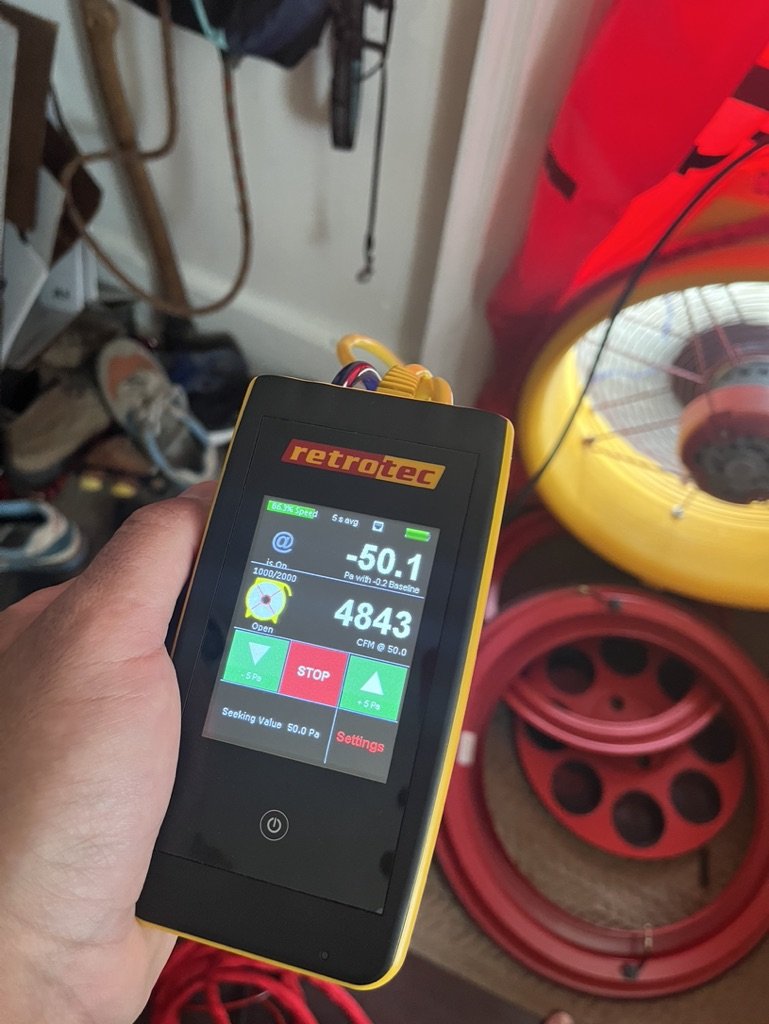
Certainly! Here’s a draft blog post on "---
Is Your Home Code-Ready? Why Blower Door Testing is the Secret Weapon
In today’s world, energy efficiency and code compliance are more important than ever. Whether you’re a homeowner, builder, or contractor, meeting the latest building codes is critical—not just for legal reasons but for energy savings and comfort, too. One of the best tools for ensuring that your home is energy-efficient and code-ready is blower door testing. If you’re new to this, don’t worry! We’ll explain everything you need to know about blower door testing and how it can make your home a model of compliance and comfort.
What Is Blower Door Testing?
Blower door testing is a method used to measure the airtightness of a building. In simple terms, it’s a way to find and fix air leaks. During the test, a powerful fan is mounted to an exterior door, pulling air out of the home to create a slight pressure difference between the inside and outside. This pressure reveals where outside air might be sneaking into the house, such as through cracks, gaps, or improperly sealed areas. These leaks can lead to wasted energy, uncomfortable drafts, and higher heating and cooling bills.
Why Code Compliance Requires Airtightness
In many places, building codes now require homes to meet specific airtightness standards to be more energy efficient. These codes are designed to reduce energy waste and make homes more comfortable. The more airtight a home is, the better it can maintain its indoor temperature, which means less energy is needed for heating and cooling. By detecting and sealing leaks, blower door testing helps your home meet or exceed these standards, making it not only code-compliant but also energy-efficient and comfortable.
Benefits of Blower Door Testing Beyond Code Compliance
Blower door testing doesn’t just help you meet code requirements; it also comes with a host of other benefits:
1. Lower Energy Bills: By identifying and sealing leaks, you can reduce the energy needed to keep your home comfortable year-round, which can lead to significant savings on your utility bills.
2. Increased Comfort: Say goodbye to drafty rooms and chilly corners! With better airtightness, your home’s temperature stays more consistent throughout each room.
3. Enhanced Indoor Air Quality: Airtight homes reduce the entry of outdoor pollutants, allergens, and moisture, all of which can affect indoor air quality and even lead to mold growth.
4. Environmental Impact: A more energy-efficient home reduces greenhouse gas emissions, which contributes to a greener planet.
### What to Expect During a Blower Door Test
If you’ve decided to schedule a blower door test, here’s what you can expect:
1. Setup: A technician will mount a large, calibrated fan into the frame of an exterior door. The fan will pull air out of the house, creating a slight pressure difference between the inside and outside.
2. Finding the Leaks: As the fan runs, it will exaggerate any leaks in the home’s exterior. Using tools like infrared cameras and smoke pencils, the technician will locate areas where air is infiltrating.
3. Sealing: Based on the test results, you can choose to seal the identified leaks. This can be done by caulking, weather-stripping, or insulating the areas where leaks were found.
4. Final Reading: After sealing, a follow-up test can measure how much the airtightness has improved. This data can help ensure that your home now meets code standards.
Common Questions About Blower Door Testing
Q: Is blower door testing required by law?
A: In many areas, yes. Building codes often require new homes to pass blower door tests to meet minimum airtightness standards. For existing homes, it may not be required, but it’s still highly beneficial for energy savings and comfort.
Q: Does blower door testing damage the house?
A: Not at all. The test is non-invasive and doesn’t harm the building materials or structure.
Q: How often should I test my home?
A: For new construction, testing once at the end of the project is typically sufficient. However, if your home is older and you notice drafts or high energy bills, it might be worthwhile to schedule a test to identify potential areas for improvement.
Making Your Home Code-Ready with Blower Door Testing
If you’re building a new home or looking to improve your existing one, blower door testing is the ultimate tool for ensuring it meets modern code standards. Not only does it help with compliance, but it also provides peace of mind that your home is as energy-efficient, comfortable, and healthy as possible.
Ready to make your home code-ready and airtight? Schedule a blower door test today, and start enjoying the comfort, savings, and environmental benefits that come with a well-sealed, energy-efficient home!



